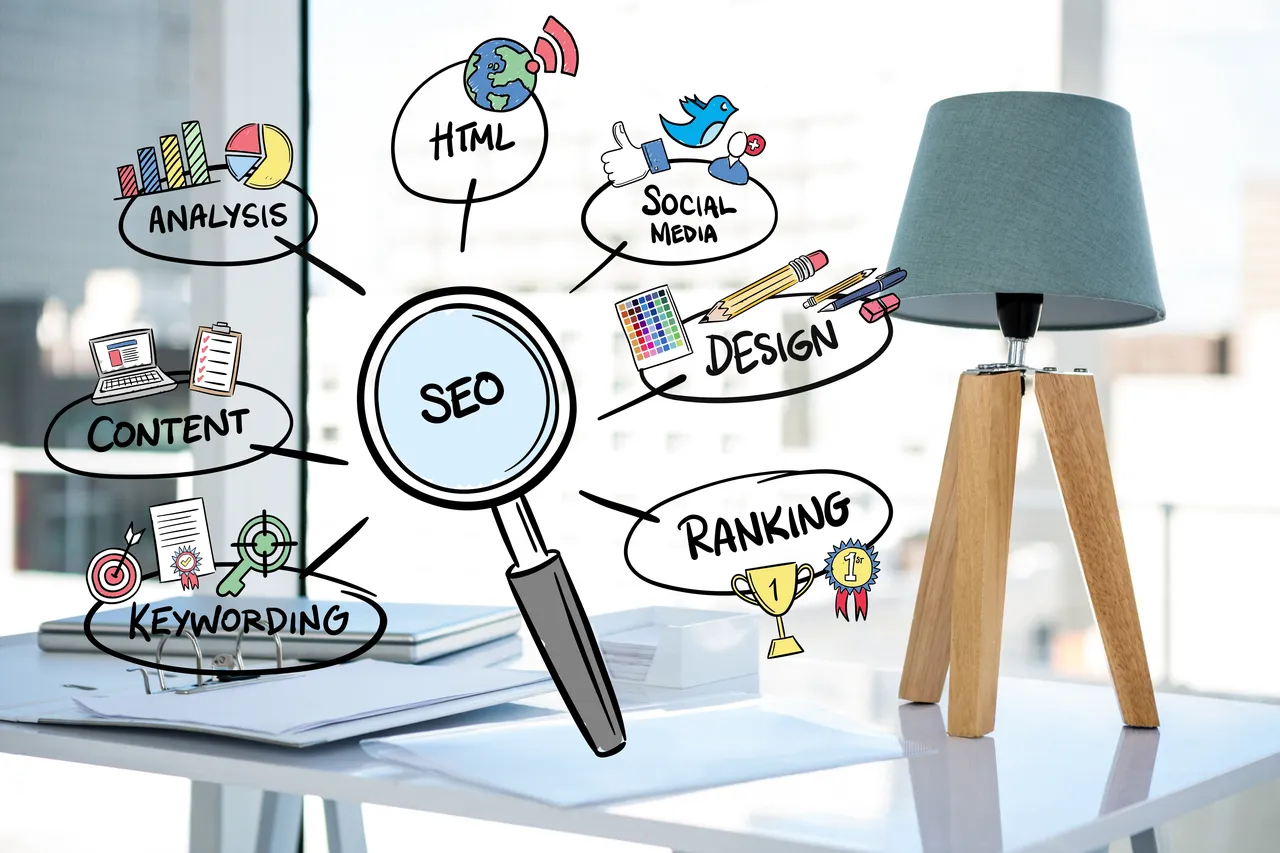Listen to article
In the quest to stand out in the crowded B2B marketplace, creating quality content is no longer optional—it’s essential. But not all content is created equal, especially when it comes to building trust.
With B2B buyers becoming more discerning, it’s crucial to understand which content resonates and establishes your brand as a credible authority. What are the trusted content types that truly make a difference?
This article dives into the data-backed strategies that B2B marketers can leverage to build trust and drive engagement. From prioritizing blogs and thought leadership to harnessing the power of email marketing and Linkedin, discover how to create content that not only informs but also fosters lasting relationships with your target audience.
Building Credibility Through Blogs and Thought Leadership
In a competitive B2B landscape, trust is no longer just a bonus—it’s a prerequisite for long-term success. Today’s decision-makers are inundated with content, so they gravitate toward brands that consistently deliver authentic, actionable, and credible information. Blogs and thought leadership content play a pivotal role in bridging the trust gap, enabling businesses to demonstrate their expertise while addressing the real challenges their audience faces.
- Blogs remain a cornerstone of B2B trust-building, with 59% of marketers ranking them as the most valuable content type. Source
- Thought leadership content is key for differentiation, helping businesses showcase their expertise and positioning them as authoritative voices in their industry. Source
Effective blogs and thought leadership content do more than just educate—they guide potential customers through complex decisions, nurture long-term relationships, and drive loyalty. To truly elevate your content strategy, focus on creating material that isn’t only informative but also forward-thinking, offering fresh perspectives or unique solutions to industry challenges.
Don’t limit thought leadership to traditional articles alone. Consider a multimedia approach to reach a broader audience: produce video interviews with industry experts, host webinars diving into trending topics, and repurpose insights into podcast episodes. This multi-format strategy not only broadens your reach but also reinforces your authority across platforms.
For businesses seeking to expand their reach and enhance their strategies, leveraging a B2B website strategy that aligns with your content goals can further amplify your message. By optimizing your website to highlight thought leadership pieces and relevant blogs, you can build credibility while driving meaningful engagement.
Transparency, Peer Validation, and Customer-Centric Content
In an era where information is abundant but skepticism is high, earning the trust of B2B buyers demands more than just attention-grabbing campaigns. Today’s buyers are deeply invested in the credibility of their information sources and actively seek reassurance through peer validation and data-backed insights. To connect meaningfully, B2B marketers must pivot from promotional narratives to strategies rooted in transparency, social proof, and a deep understanding of customer pain points.
- 78% of B2B buyers place a stronger emphasis on the trustworthiness of a content source when evaluating online information. Source
- Peer recommendations and customer reviews significantly influence decisions, with 33% of buyers relying more on testimonials and case studies to guide their choices. Source
- A customer-first approach drives success, as 87% of top-performing marketers prioritize addressing user pain points over promoting their own sales agendas. Source
Key Takeaway: Trust is the Foundation of Connection
The data is clear—B2B buyers are motivated by clarity, authenticity, and evidence of value. Generic product pitches and flashy claims have taken a backseat to meaningful, solution-oriented messaging that speaks directly to customer challenges. To stand out in a crowded marketplace, ensure your content strategy reflects transparency and empathy. Tap into the power of peer validation by amplifying customer stories and use real-world insights to illustrate your brand’s reliability.
Pro Tip:
Want to maximize the impact of your trust-building strategy? Pair written testimonials and case studies with video content or infographics to more effectively connect with visual learners. Additionally, feature metrics-driven success stories whenever possible to provide the tangible proof buyers crave.
Content Formats That Drive Engagement and Trust
Different content formats resonate differently with B2B buyers. Understanding which formats are most effective for information exchange and trust-building is crucial for successful content marketing.
- B2B buyers are willing to share information in exchange for access to:
- Webinars (79%)
- White papers (76%)
- Third-party/analyst reports (66%)
- E-books (63%)
- Case studies (57%). Source
- Ebooks/white papers (50%), case studies (47%), and social media posts (41%) are cited among the top three most effective content types used by B2B marketers for content marketing purposes. Source
- B2B marketers find articles/blog posts, white papers, and videos as the three most valuable content marketing types for moving prospects through the sales funnel. Source
- Beyond virtual events, the top marketing tactics for B2B marketers include research reports, whitepapers, case studies, and long-form articles. Source
- A Gartner study revealed that 65% of B2B buyers use YouTube to gather information for their decisions. Source
- This same study also highlighted that buyers value interactions with third parties 1.4 times more than direct interactions with suppliers. Source
The data indicates a clear preference for in-depth, informative content formats like webinars, white papers, case studies, and long-form articles. By prioritizing these formats, B2B marketers can effectively engage their audience, build trust, and guide prospects through the sales funnel. By incorporating unbiased perspectives and valuable insights, businesses can build stronger relationships and establish themselves as trusted advisors.
Email Marketing: A Data-Backed Path to B2B Trust and ROI
With crowded digital landscapes and information overload, email marketing remains a steady force in B2B strategies, delivering unmatched reliability and adaptability. Unlike fleeting social trends or algorithmic whims, email offers marketers a direct and controlled line to their audience—a lifeline for building credibility and fostering long-term engagement. As these statistics reveal, businesses that prioritize email marketing aren’t just keeping up—they’re thriving.
- Email marketing is anticipated to generate $9.5 billion in revenue in 2024, with projections soaring to $18.9 billion by 2028, signaling its ongoing dominance in the marketing ecosystem. Source
- A notable 83% of B2B marketers consider email one of their most indispensable marketing channels. Source
- When it comes to outreach, 77% of B2B buyers prefer email as their communication channel of choice. Source
- 42% of buyers regard email as the most trustworthy marketing channel. Source
- The Content Marketing Institute identifies email as the most effective channel for content distribution. Source
- In 2023, 79% of B2B marketing firms and agencies cited email as their most successful platform for distributing content. Source
- Email newsletters are a cornerstone strategy for 73% of marketers, playing a pivotal role in content marketing efforts. Source
- 60% of consumers favor email as their preferred way to hear from brands. Source
- Boasting one of the highest returns on investment (ROI), email marketing outperforms digital heavyweights like SEO, mobile marketing, and content marketing. Source
What This Means for Your Strategy
Email marketing is more than just a communication channel—it’s a trust-building powerhouse and ROI driver in a competitive marketplace. The platform’s ability to provide personalized, direct, and relevant content positions it as a cornerstone in modern B2B marketing strategies. But excelling in email marketing isn’t just about hitting send. It’s about crafting messages tailored to your audience’s needs, curating value-driven content, and tapping into the data-backed potential of segmentation and automation.
Pro Tip:
Want to take your email marketing up a notch? Leverage behavioral triggers—like abandoned cart reminders or post-download follow-ups—to create highly relevant and timely content. Pair this with A/B testing on subject lines or calls-to-action to uncover what resonates best with your audience. It’s the small, data-driven tweaks that can deliver big results.
Why LinkedIn Reigns Supreme for B2B Marketing Success
In the competitive world of B2B marketing, standing out requires a smart strategy, and LinkedIn has proven to be a game-changer. With its professional user base and an array of targeted tools, LinkedIn consistently outpaces other platforms in delivering tangible results for business marketers. For B2B organizations aiming to foster meaningful connections and drive measurable outcomes, LinkedIn is not just an option; it’s a necessity.
- 85% of B2B marketers cite LinkedIn as the social media platform that delivers the best value for their organization. Source
The numbers don’t lie: LinkedIn’s dominance in B2B marketing highlights its unique ability to connect brands with decision-makers and industry influencers. But it’s not just about being present on the platform—it’s about making the most of its advanced targeting, analytics, and content-sharing features.
To amplify your results, experiment with LinkedIn’s native tools like Sponsored Content or LinkedIn Live. Use these to deliver value through insights, industry updates, or live Q&A sessions, positioning your brand as a trusted industry authority.
Elevating Brand Authority Through Thought Leadership
In the competitive B2B landscape, where trust and credibility often define relationships, thought leadership has emerged as a cornerstone strategy. It’s not just about sharing knowledge; it’s about showcasing an in-depth understanding of industry challenges, trends, and solutions that resonate with your audience. When executed effectively, thought leadership doesn’t just educate—it influences decision-making and differentiates your brand from competitors.
- 56% of B2B marketers plan to increase their creation of blog posts and thought leadership articles. Source
- 60% of creators believe that publishing thought leadership content enhances their organization’s brand reputation. Source
- 88% of business decision-makers reported that thought leadership content increased their respect and admiration for the publishing organization, climbing to 89% among C-suite executives. Source
These numbers highlight how thought leadership has moved beyond mere content marketing to become a strategic lever for building trust with key stakeholders. C-suite executives, in particular, view it as a powerful indicator of a company’s expertise and reliability, creating opportunities to influence high-value decision-makers at a deeper level.
Pro Tip:
Thought leadership isn’t about self-promotion—it’s about providing value. When developing content, focus on addressing real industry pain points and delivering actionable insights. For added impact, collaborate with internal subject matter experts or external contributors to provide diverse perspectives. Tools like BuzzSumo or SEMrush can help identify trending topics to ensure your content remains timely and relevant.
If you’re looking to combine thought leadership with other impactful strategies, consider exploring digital marketing strategies for small businesses. Pairing a strong content strategy with techniques like SEO, email marketing, and social media can elevate your brand’s authority while driving measurable results.
Conclusion
Building trust through content is not just a strategy—it’s a necessity in today’s competitive B2B landscape. The data paints a clear picture: trusted content types like blogs, webinars, white papers, and thought leadership articles are the cornerstones of effective relationship-building and long-term engagement. By aligning your content strategy with the preferences and expectations of your audience—whether through transparency, social proof, or value-driven storytelling—you not only capture attention but also foster credibility and loyalty.
From the enduring power of email marketing to LinkedIn’s unmatched value for B2B engagement, the avenues for trust-building are diverse and impactful. But the key lies in consistency and relevance. Tailoring your approach to meet the unique needs of your audience ensures that your brand remains top-of-mind and positioned as a trusted advisor.
Ready to boost your traffic and grow your website? Your customers are looking for you, and our SEO services can help you be found across search engines. Let’s work together to create content that doesn’t just inform—but builds trust where it matters most.
About Creating Trusted Content Types (According to the Data)
This guide was written by the Scopic Studios team and reviewed by Araksya Hakobjanyan, SEO Lead at Scopic Studios.
Scopic Studios delivers exceptional and engaging content rooted in our expertise across marketing and creative services. Our team of talented writers and digital experts excel in transforming intricate concepts into captivating narratives tailored for diverse industries. We’re passionate about crafting content that not only resonates but also drives value across all digital platforms.
Note: This blog’s images are sourced from Freepik.





























































































































































































































































